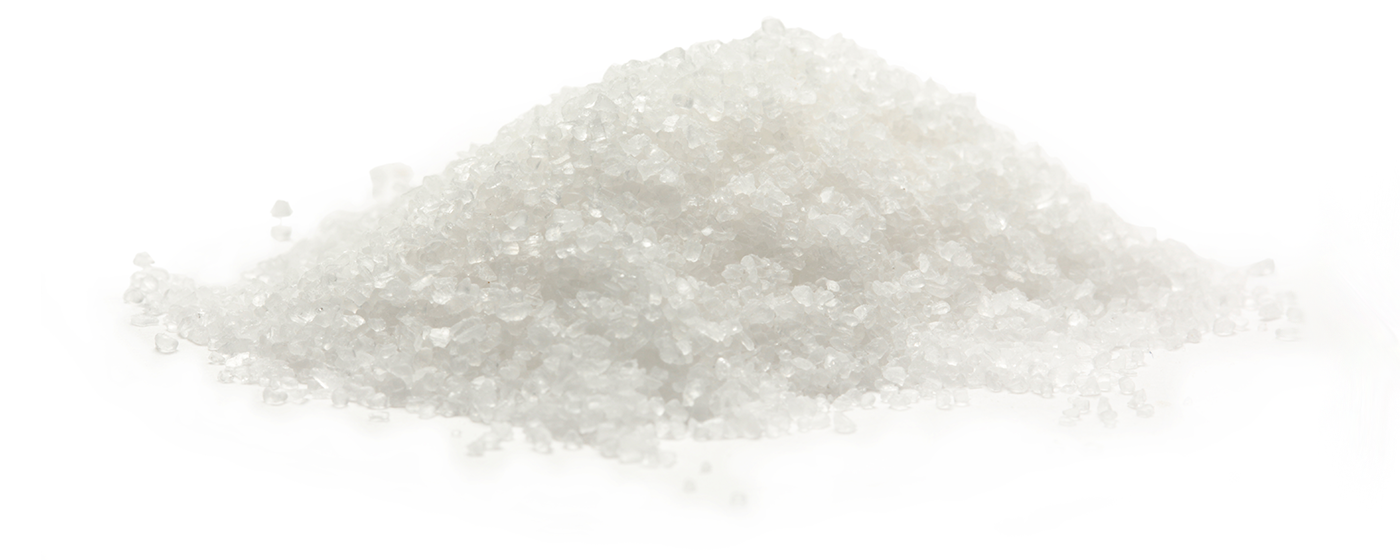Salt
Salt, found in the sea and underground, is one of the most abundant minerals on the planet. Extraction is the oldest means for harvesting sea salt. This technique involves collecting sea water in salt marshes and retrieving the salt once the water has evaporated. Salt is used worldwide, especially in the food industry as a condiment and a preservative.
From land to sea
Formed from whitish, crumbly, soluble crystals, salt is one of the most abundant minerals on the planet and found in almost unlimited amounts in the earth and oceans. The salinity of the seas apparently resulted from the erosion of the Earth’s crust by rivers during the formation of the primitive seas. Seawater contains approximately 35 g of salt per litre of water, which is around three times more than it originally contained. The salt in underground deposits is thought to have ensued from the evaporation of primitive seas and from the gradual fossilisation of salt.
Extracting sea salt
Extraction is the oldest means for harvesting sea salt. It involves collecting sea water in salt marshes, also called salterns, where the salt is retrieved after the water has evaporated. Salt farmers dread rainfall as it dilutes the salt marshes where seawater flows from pond to pond, from the deepest to the shallowest, depending on the salt concentration. Crystallisation occurs in the final pond called the ‘salt table’, or known as the ‘crystalliser’ in the Mediterranean region and the ‘eyelet’ in the Atlantic region. After drying out, the crystallised layer of salt, called the ‘gâteau’, is harvested either by hand or with a mechanical harvester. When weather conditions permit, a very fine film of salt, the ‘fleur de Sel’ (literally ‘flower of salt’), forms on the surface of the water. The salt worker (called a ‘saunier’ in the Mediterranean and a ‘paludier’ on the Atlantic coast) can harvest this by hand, with the help of a long wooden rake. The salt is then stored in piles, known as ‘camelles’, or in a shed to protect it from adverse weather conditions. It is finally packaged in cardboard packets or boxes.
Rock salt comes from mines and is obtained mechanically, particularly by drilling. Refined salt is found in much deeper deposits and its extraction involves water injection, then pumping and heating in boilers.
Even desserts and soft drinks contain salt!
Salt is mainly composed of chlorine (60%) and sodium (40%), as well as trace elements (magnesium, calcium, zinc, potassium, manganese and fluorine). Salt has many uses throughout the world, in both the chemical and food industries. Salt enhances the flavour of food and increases its shelf life. Today, almost every industrially produced foodstuff contains salt, whether pastries, tinned food, ice cream, soft drinks or even some white wines.
Derived names
Several foodstuffs derive their name from the word ‘salt’, as historically they are salted dishes: salad (salted garden herbs), sauce (salted liquid or semi-liquid mixture), salpicon (a hot or cold salted dish), sausage (salted meat-based product), salami (processed meat product made from finely minced salted meat), salmi (rich stew made from pieces of feathered game and salted), etc.
COMITÉ DES SALINES DE FRANCE, s. d. Différents modes de production, Comité des Salines de France [en ligne]. [Consulté le 09 septembre 2015]. Disponible à l’adresse : http://www.salines.com
LAZSLO, Pierre, 1998. Chemins et savoirs du sel. Paris : Hachette.
LEFIEF-DELCOURT, Alix, 2010. Le sel malin. Paris : Poche.







